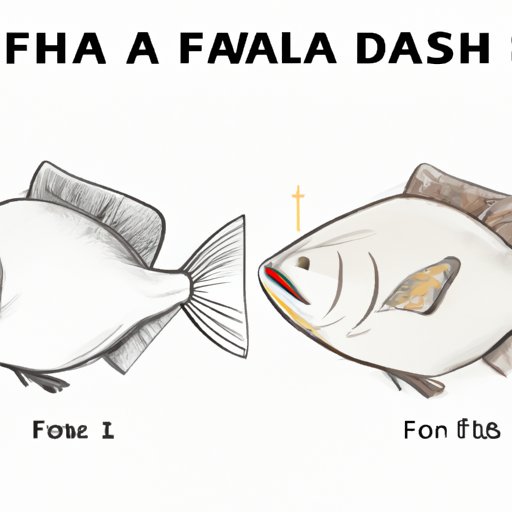I. Introduction
If you’re an aspiring artist looking to improve your drawing skills, learning to draw a fish can be a great place to start. Not only are fish interesting and diverse creatures, but they can also be challenging to draw, helping you build your skills as an artist. This article is designed to provide you with a step-by-step guide to drawing a fish, as well as various techniques to try out and tips for adding realistic details to your work.
II. Step-By-Step Guide to Drawing a Fish
Start by drawing a basic oval shape to outline the body of the fish. Then, add a triangle for the tail, and two small triangles for the top and bottom fins. Next, add a small circle for the eye, and draw lines to indicate the gills. From here, you can start adding details like scales, texture, and shading to create a more realistic-looking fish.
To create the illusion of scales, draw small, overlapping ovals all over the body of the fish. When shading, focus on the darker areas of the fish, like the gills, fins, and tail. Use a lighter hand when shading the areas with scales, as they would naturally reflect more light. To create highlights, use an eraser to gently remove some of the graphite in areas where light would naturally hit, like the top of the fish’s head or the tip of its tail.
III. Various Fish Drawing Techniques to Try
If you’re looking to switch things up or learn new techniques, there are several other approaches you can try. For example, using a grid can be helpful if you struggle with proportions or getting the initial outline of the fish just right. Tracing can also be a valid technique if you need to quickly replicate an image or are experimenting with styles.
Remember, there’s no one-size-fits-all approach when it comes to drawing. Different techniques will work better for different artists, so experiment until you find what works best for you.
IV. Fish Anatomy for Artists
Understanding the anatomy of a fish can be essential for capturing its unique features in your artwork. Some key features to keep in mind include the fins, tail, and gills, as well as the way the body curves and tapers toward the head and tail. Paying close attention to these details can help you create more accurate and realistic-looking fish in your work.
V. Tips for Adding Realistic Details to Your Fish Drawings
There are several techniques you can use to add depth and realism to your fish drawings. For example, using crosshatching can help create the look of texture, as can using a pencil with varying levels of hardness. Experimenting with light and shadow can also help create a more three-dimensional look and feel to your work.
Another way to add realism to your drawings is by paying close attention to the details of each individual fish you’re drawing. No two fish are precisely alike, and studying reference images or real-life fish can help you capture those unique qualities in your work.
VI. Fish Drawing Challenges for Aspiring Artists
If you’re looking to improve your skills even further, consider taking on some fun fish drawing challenges. These could include drawing fish in different poses, environments, or styles or even creating your unique species of fish. Setting yourself goals can help motivate you to keep practicing and pushing your skills to the next level.
Remember, when it comes to drawing, practice is key. The more you draw, the more your skills will improve, so keep at it, and don’t be afraid to experiment or make mistakes along the way.
VII. Conclusion
Whether you’re an experienced artist or just starting, drawing a fish can be an excellent way to build your skills and explore new techniques. From understanding fish anatomy to experimenting with shading and textures, there are endless opportunities to challenge yourself and grow as an artist.
So grab some paper, a pencil, and start drawing! You never know where your creativity will take you.
